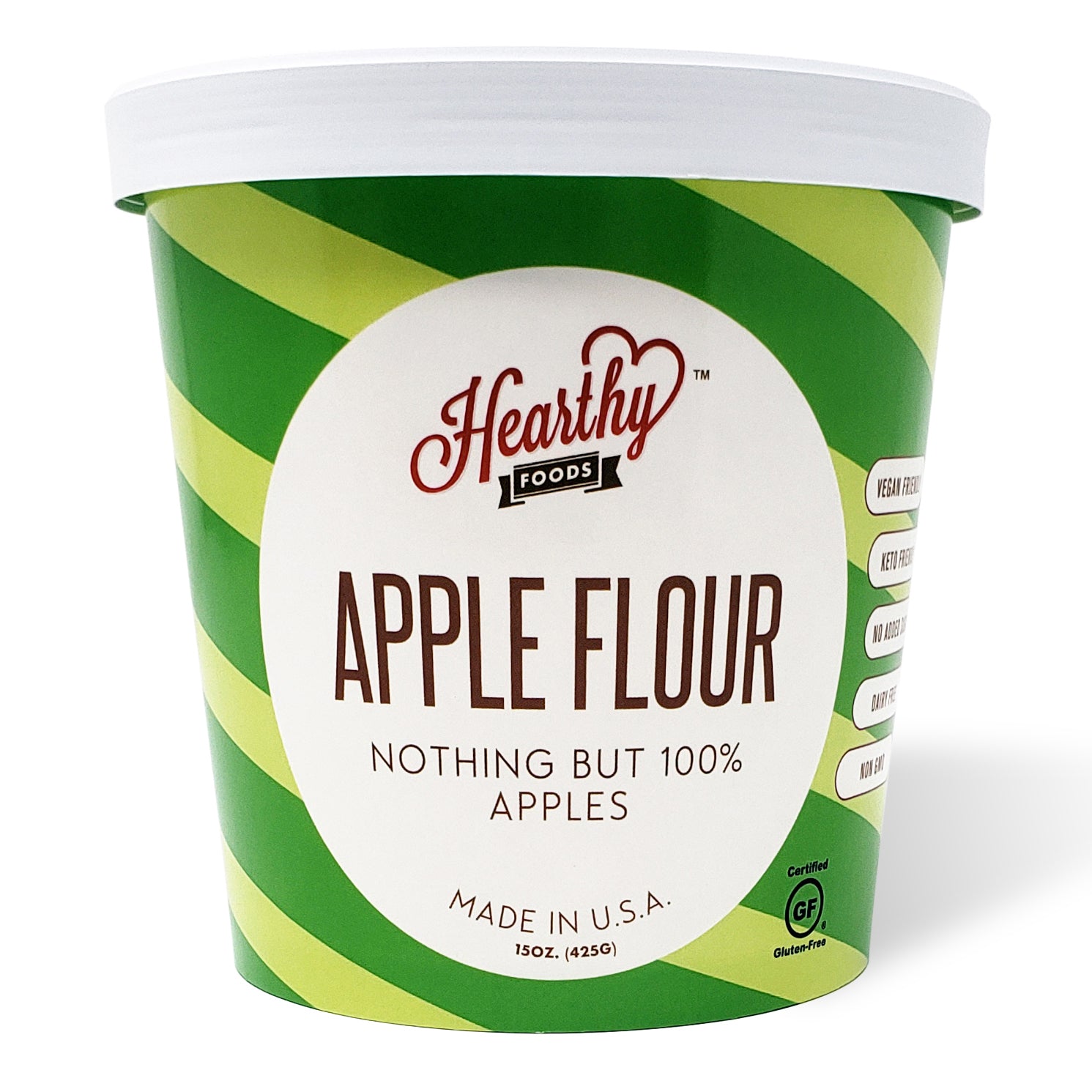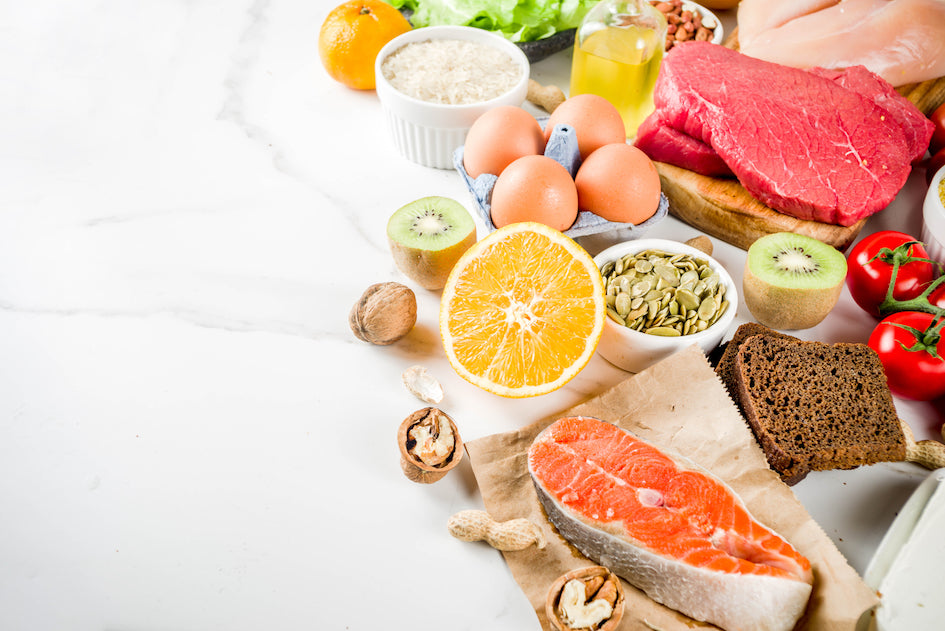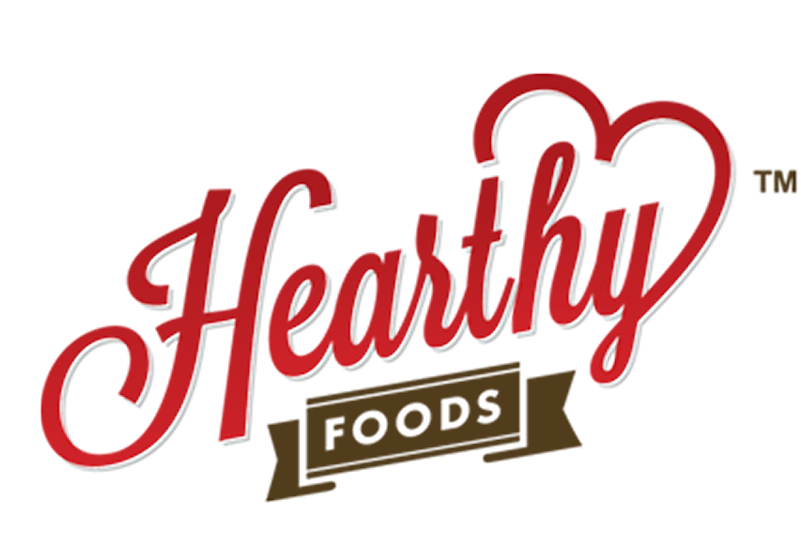News

MAR 28, 2022
What Does Hearthy Mean?
What does Hearthy mean? Hearthy is a term derived from love, and endearment. The foundation of our company. There are three words that are derived from the origin of Hearthy. Heart + Earth + You! These three words are core values the Hearthy family lives by. Heart, because each and every one of our products is made heart healthy (grass fed, gluten free, low sugar, halal). Earth, because we create our products from sustainably sourced, whole food ingredients (flours are made from ugly fruit, repurposed fruit to eliminate food waste). And You, because our customers are always at the forefront of our mind. Thank you for your continued support of our company, we do this for you, because of you and create new products with you to help you live your best healthy & Hearthy life.Sincerely, Riaz CEO & Founder
READ MORE
MAR 23, 2022
The Benefits of Taking Collagen While Fasting. A Strategic Advantage
Everyone knows the benefits of fasting. Dieticians, scientists, religious scholars are advocating fasting as a way to help with physical, mental, and spiritual growth. What is fasting? Fasting is the willful refrainment from eating and sometimes drinking. From a purely physiological context, "fasting" may refer to the metabolic status of a person who has not eaten overnight, or to the metabolic state achieved after complete digestion and absorption of a meal. Several metabolic adjustments occur during fasting. Some diagnostic tests are used to determine a fasting state. For example, a person is assumed to be fasting once 8–12 hours have elapsed since the last meal. Metabolic changes of the fasting state begin after absorption of a meal. Renowned intermittent fasting advocate and doctor Dr. Jason Fung says fasting helps with insulin control, weight loss, lower the risk of diabetes, and most importantly overall good health. How does collagen play a specific role in helping you enhance your fast? Lets take a look at what collagen is. Collagen is protein. Since collagen is a protein that is critical for health and wellness. Just by adding a scoop of collagen to your into your water, coffee or tea at the break of your fast, especially Hearthy collagen (unflavored & unsweetened variety), will help you get you an instant boost that will enhance recovery. At an average of 35 calories per 10g serving, collagen helps you to feel full and energized. Knowing that there is a minimum amount of food you can eat before the start of your fast and at the break of fast makes collagen an optimal choice. After all, adding a scoop of easy-to-mix collagen to your daily nutrition supports a whole roster of health and beauty goals including maintaining strong bones, healthy tendons & cartilage, a healthy gut, shiny thick hair, strong nails, lean muscle, better flexibility, and last but not least, smooth, hydrated, youthful skin. Its a really a no-brainer. Take collagen in the morning before your fast and at the break of fast. Here's why? Collagen will help you feel full and sustain you for rest of the day. Since collagen is keto, you can still get to ketosis during the fast, and best of all you won't feel bloated. Also, take collagen with water at the break of fast. It has no flavor and will dissolve completely. It helps with energy, feeling satiated, and curtails you from overeating. How much Collagen should you take at the beginning and the end of your fast? We recommend 10 to 15 mg before and end of the fast.
READ MORE
NOV 17, 2021
This Fiber-Rich Flour Boosts Gut Health, Lowers Cholesterol, and Reduces Inflammation
For the longest time, the only types of flour in my life were all-purpose and wheat. I had no idea that fruit and vegetable flours existed, or that they would even hold up in a recipe … until I tried apple flour. The cold weather was making me crave baked goods, so I poked around the pantry and pulled out some apple flour I had bought a few weeks ago out of curiosity. I followed a recipe on the back of the package for chocolate chip cookies, spooned out the dough, and popped a tray into the oven. They were delicious! The flour gave the cookies a soft, fluffy texture, and I couldn’t taste a trace of apple. Why swap apple flour for all-purpose? We can all agree that cookies are still an indulgence. However, using apple flour increases the fiber and antioxidants in your baked goods. Higher fiber and antioxidants translate into a wealth of health benefits. The flour is so light that many bakers prefer it for baked goods that need a fluffy texture. You can also use it to thicken sauces and mixes or even as a sugar substitute. Apple flour already has a decent amount of sugar. So, some healthy-minded bakers like to swap it in for sugar (a one-to-one ratio) for any recipe. If you’re a first-time baker, try following a recipe that is designed for apple flour. That way, your baked goods will have a better balance of other wet and dry ingredients. Apple Flour Nutrition Packs a Punch Because apple flour is made from the fiber-rich portions of the apple, it contains an impressive amount of fiber. “High fiber foods can reduce your risk of developing colon cancer, prevent constipation, and help you maintain an ideal body weight by making you feel fuller for longer and reducing your urges to overeat,” says Sara Speckels, a plant-based chef, certified health and wellness coach, and owner of Farmacy Revolution. Most of the fiber in apple flour comes from pectin, a soluble fiber. Soluble fiber is the kind that draws water into the gut and slows down digestion. “Soluble fiber, such as pectin, is especially important because it can help lower your blood cholesterol levels and may reduce your risk of developing heart disease,” Speckels says. The benefits of soluble fiber don’t stop there. “It can also stabilize your blood sugar levels and aid in managing type 2 diabetes,” she adds. “Soluble fiber also plays a key role in creating a healthy and diverse population of friendly bacteria in your digestive system which can reduce inflammation, improve your digestion and overall mood, as well as help regulate and support your immune system.” In addition, the antioxidants in apple flour aren’t lost during the manufacturing process. Research published in the journal Antioxidants shows that apple flour is rich in flavonoids like quercetin. Quercetin is a plant compound that reduces inflammation and may protect against heart disease and cancer. Are there downsides to eating apple flour? The only downside that Speckels can think of is apple flour’s potential to create bloating and allergies. “Although there are many benefits to adding soluble fiber-rich foods to your diet, such as apple flour and pectin, it can cause bloating and/or gas,” she explains. “It is recommended to gradually increase your fiber intake slowly and consume fiber in moderation. It also should be noted, as with any food, it is possible to have or develop an allergy to it.” If you have a history of fruit allergies, talk to your doctor before trying apple flour. If not, try adding the flour to your diet gradually as Speckels suggests. And check out these tricks to nix bloating. Sweet Recipe Ideas Ready to test out apple flour for yourself? Speckels suggests an easy, no-bake recipe for what she calls apple power bites, a tasty midday snack or a healthy dessert. All you need is 1 cup of apple flour, ½ cup of rolled oats, ¼ cup of raisins, 1 teaspoon of ground cinnamon, and ½ cup of peanut butter. “Place the apple flour, oats, raisins, and cinnamon in a food processor and pulse five to eight times to thoroughly combine,” Speckels says. “Transfer the mixture to a mixing bowl and stir in the peanut butter. Form the mixture into ping-pong-sized balls.” Feel free to eat these apple bites right after you make them, or store them in the fridge in an air-tight container for up to a week. article written by Jenna Cartusciello
READ MORE
OCT 26, 2021
5 Gluten-Free Pumpkin Recipes You Need to Try Now!
We know everyone’s favorite flavor during fall in none other than pumpkin! Pumpkin is such a versatile, nutritious and flavorful starchy vegetable that makes it the perfect seasonal favorite for desserts, soups, sauces and more. Its symbolic of all the delightful things that falls brings, and we love throwing it into absolutely everything. Check out this ultimate guide to fall pumpkin recipes and bookmark these for this week’s menu! Gluten-Free Pumpkin Soup With Collagen Gluten-Free Pumpkin Apple Flour Cake Gluten-Free Pumpkin Gingerbread Cookies Gluten-Free Low FODMAP Pumpkin Flour Kabocha Meatballs Gluten-Free Pumpkin Scones
READ MORE
AUG 05, 2021
Your Guide to Hearthy Foods’ Low FODMAP Products
Recently, we’ve been sharing recipes that adhere to the Low FODMAP diet, like our Tuscan Kale & Almond Flour Crackers, or our Grilled Asian-Style Meatballs. With our large variety of alternative, gluten free products, it just so happens that many of them can also be safely consumed on the Low FODMAP diet! In this blog post, we’ll review which products are Low FODMAP according to resources and information collected from Monash University, and how you can use them in your everyday cooking and baking. What is the Low FODMAP Diet? If you’re unfamiliar with the diet, the FODMAP diet is a 3-step dietary plan that was designed to provide relief for individuals suffering from Irritable Bowel Syndrome (IBS). “FODMAP” stands for Fermentable Oligosaccharides, Disaccharides, Monosaccharides and Polyols, which are short-chain carbohydrates that are rapidly fermented by bacteria in the gut. For those with IBS, this can trigger unpleasant symptoms such as bloating, gas and stomach pain. They’re found in everyday foods, such as wheat, apples, garlic, onion, cauliflower and honey, to name a few. Fortunately, research has shown that successful implementation of the diet can reduce stomach pain, bloating and distension, and improve bowel habits and quality of life. To learn more and for additional resources, visit MonashFODMAP.com. Which of Our Products are Low FODMAP? Our Low FODMAP Nut Flours Almond Flour - According to Monash University’s Low FODMAP Diet app, almond flour is Low FODMAP in 1/4 cup servings, but high FODMAP in 1/2 cup servings. Almond flour is a great base flour to use for bread, pancakes, brownies, cookies, cakes, muffins and waffles. Use them in combination with finer flours, like tapioca flour or cassava flour, to achieve the best texture. Pecan Flour - Pecans are Low FODMAP in 0.71 ounces, which translates to about 19 grams of our pecan flour. While FODMAP content can vary from its whole form to the flour form, keeping the serving size low at 19 grams should be safe. Pecan flour can be used similarly to almond flour. Our Low FODMAP Fruit Flours Cacao Flour - Cacao flour is Low FODMAP at 2 heaped teaspoons (0.28 ounces), and high FODMAP in 50 teaspoons (7.0 ounces). Use this to add chocolatey flavor to anything you desire - smoothies, oatmeal and baked goods. Cassava Flour - Cassava flour is Low FODMAP in 15 gram servings, which equates to 2 tablespoons. Although this is a small amount, it can be combined with other Low FODMAP flours, like almond, quinoa and/or oat flour, to achieve a perfect bready texture in baked goods, while keeping the FODMAP-levels low. Potato Flour - There are no detectable FODMAPs in fresh potato, so potato flour is likely safe at standard serving sizes. Potato flour creates moist products due to the flour’s ability to attract and retain moisture. Use it combined with other flours to make the perfect bread flour mixture. Kabocha Pumpkin Flour - Fresh Kabocha pumpkin is Low FODMAP in 2.65 ounce servings (2/3 cup). There are no detectable FODMAPs in fresh Kabocha pumpkin, so a serving of our flour seems to be safe. This flour is perfect for rice breads, loaves and cakes. Tapioca Flour - Tapioca flour is safe in 2/3 cup servings (3.53 ounces). As a finer flour, it adds lightness to baked goods, making it perfect to pair with denser flours like almond flour, pecan flour or oat flour. You can use it to make perfect crepes, pancakes and breads, or to thicken sauces. Our Low FODMAP Vegetable Flours Broccoli Flour - Fresh broccoli is Low FODMAP in 2.65 ounce servings (3/4 cup). As 3/4 cup of broccoli has ~4.5 grams of carbohydrates, this equates to about 2 tablespoons of our broccoli flour. A tiny bit of this flour is all you need to sneak a little bit of health in dips, sauces or savory baked goods. Carrot Flour - There are no detectable FODMAPs in carrots, so a full serving of carrot flour is likely safe on the Low FODMAP diet. Its density and versatility make it easy to swap into recipes that call for all-purpose flour. If you want to be cautious for potential FODMAP content, combine this with other FODMAP-friendly flours.Kale Flour - There are only trace amounts of FODMAPs found in kale. This flour is potent, and a tiny bit is all you need for a burst of kale flavor. Sneak them into savory baked goods like muffins, crackers and loaves, or use them directly in smoothies or acai bowls. Parsnip Flour - Similar to carrots, there are no detectable FODMAPs in parsnips. This flour can be added to many recipes such as meatloaf, breads, pancakes, brownies, cookies, cakes, muffins, waffles, ice creams, yogurt, smoothies - you name it. It adds a subtle sweetness and an extra boost of nutrition and flavor. Our Low FODMAP Grain Flours Buckwheat Flour - Buckwheat flour has been tested to be Low FODMAP at 2/3 cup, or 3.53 ounces. Buckwheat provides a rich, earthy flavor and is best used for quick breads and yeast breads. Millet Flour - Millet flour has been tested to be Low FODMAP at 2/3 cup. Its light, mild flavor makes it perfect for sweet or savory baking, and adds a cake-like crumb to baked goods. Oat Flour - Oat flour has been tested to be Low FODMAP at 1/2 cup servings. Oat flour is a great substitute for all purpose flour. Use it for cakes, crunchy cookies, moist breads, crusts, cupcakes and muffins. Quinoa Flour - Quinoa flour is Low FODMAP in 2/3 cup servings. This high protein and high fiber flour helps provide structure and rise to baked goods, so the possibilities are endless. It also adds a unique grassy flavor. Rice Flour - Rice flour is Low FODMAP in 2/3 cup servings. Combine rice flour with other Low FODMAP flours for use in quick breads and cookies. It can be used to thicken soups and stews, and can also be used as a crispy coating for fried goods. Other Low FODMAP Products Gluten-Free All Purpose Flour - Our gluten-free all-purpose flour is made with oat flour, tapioca flour, xanthan gum, making at least 1/2 a cup Low FODMAP. Grass-Fed Gelatin Marshmallows - No High-FODMAP ingredients here! Our marshmallows contain simple ingredients, with the only carbohydrates being sugar and tapioca flour. Grass-Fed Collagen and Grass-Fed Gelatin - As collagen and gelatin do not contain carbohydrates, both are FODMAP-friendly. We hope this list gave you some ideas on ways to use our Low FODMAP products. Do you have your own favorite ways to use our specialty flours? Let us know in the comments below!
READ MORE
JUN 17, 2021
How Men Can Use Collagen Peptides For Hair Growth
Kim Bowman, MS As we age, our body produces less collagen overtime which is part of the reason why men start to experience thinning hair/hair loss with age. Collagen peptide supplementation has gained increasing popularity over the years not just for it’s skin rejuvenation benefits but also for its ability to promote significantly more healthy, hydrated hair! What’s more is that a high quality collagen peptide supplement taken daily, has shown to prevent early signs of hair loss, thinning hair, and also boost hair growth for all-around thicker, shinier, and silkier locks. What are Collagen Peptides? Collagen is a complete, non-fragmented protein, meaning it cannot be absorbed directly on top of the skin. Collagen peptides on the other hand are short chains of amino acids that act as building blocks for essential proteins found in the hair follicles and skin. Peptides are much smaller, fragmented portions of collagen protein which can penetrate our hair follicle at the cellular level. These key amino acids are required to build the protein keratin which is the key player in promoting hair strength and shine. Unfortunately, overtime with age, collagen production starts to decline which can lead to thinning or brittle hair. Studies have found that incorporating quality-sourced collagen peptides on a daily basis can improve not only hair thickness but also promote hair growth and shine. Therefore, for those dad’s who may be concerned about hair loss or looking to lock in hydration for silky smooth locks-- Hearthy’s Grass-Fed Collagen Peptides are the solution! Collagen Peptides Help to Regenerate Hair Follicles The cells in our body use these short chains of amino acids to produce keratin protein which plays a key role in boosting hair growth and improving overall hair strength and elasticity. These collagen peptides also work alongside hyaluronic acid to moisturize and rebuild the environment surrounding each hair follicle. Improved structure around the hair follicle leads to better diffusion of nutrients to the follicle and more moisturized hair as a result. Additionally, collagen is a natural antioxidant which helps to neutralize free radicals; compounds that develop in the body as a result of stress, poor diet, air pollutants, alcohol, and other environmental influences. Without collagen peptides to avoid these free radicals, they can build-up in the body and induce damage on hair follicles ultimately contributing to hair loss. Collagen peptides also play a significant role in preventing thinning hair. Collagen makes up a large portion of the skin dermis which houses the root follicle of each hair. Therefore, regular collagen peptide supplementation contributes to greater elasticity and strength in the skin dermis to prevent early signs of balding or receding hairline. How to Incorporate Collagen Peptides into Your Daily Routine Hearthy’s grass-fed collagen peptides is a flavorless yet fast-dissolving powder that can be easily added into shakes, smoothies, or soups! What’s unique about Hearthy’s collagen powder is that it is sourced from grass-fed, pasture-raised bovine hides and contains 18 different amino acids (7 essential amino acids) that promote stronger, silkier locks after about a month of daily supplementation (1 Tablespoon per day). After a Workout - Add collagen to your recovery shake, smoothie or water. In a Hot Hot Beverage - Add to your morning coffee or tea - It’s the perfect coffee creamer on the go! In Your Favorite Recipe - Mix into your favorite muffin, brownie or cookie recipe - it's flavorless and won’t change the consistency of your baked goods! Here’s the link to check out more information and order Hearthy’s Halal Collagen Peptides! References Trüeb R. M. (2015). The impact of oxidative stress on hair. International journal of cosmetic science, 37 Suppl 2, 25–30. https://doi.org/10.1111/ics.12286
READ MORE